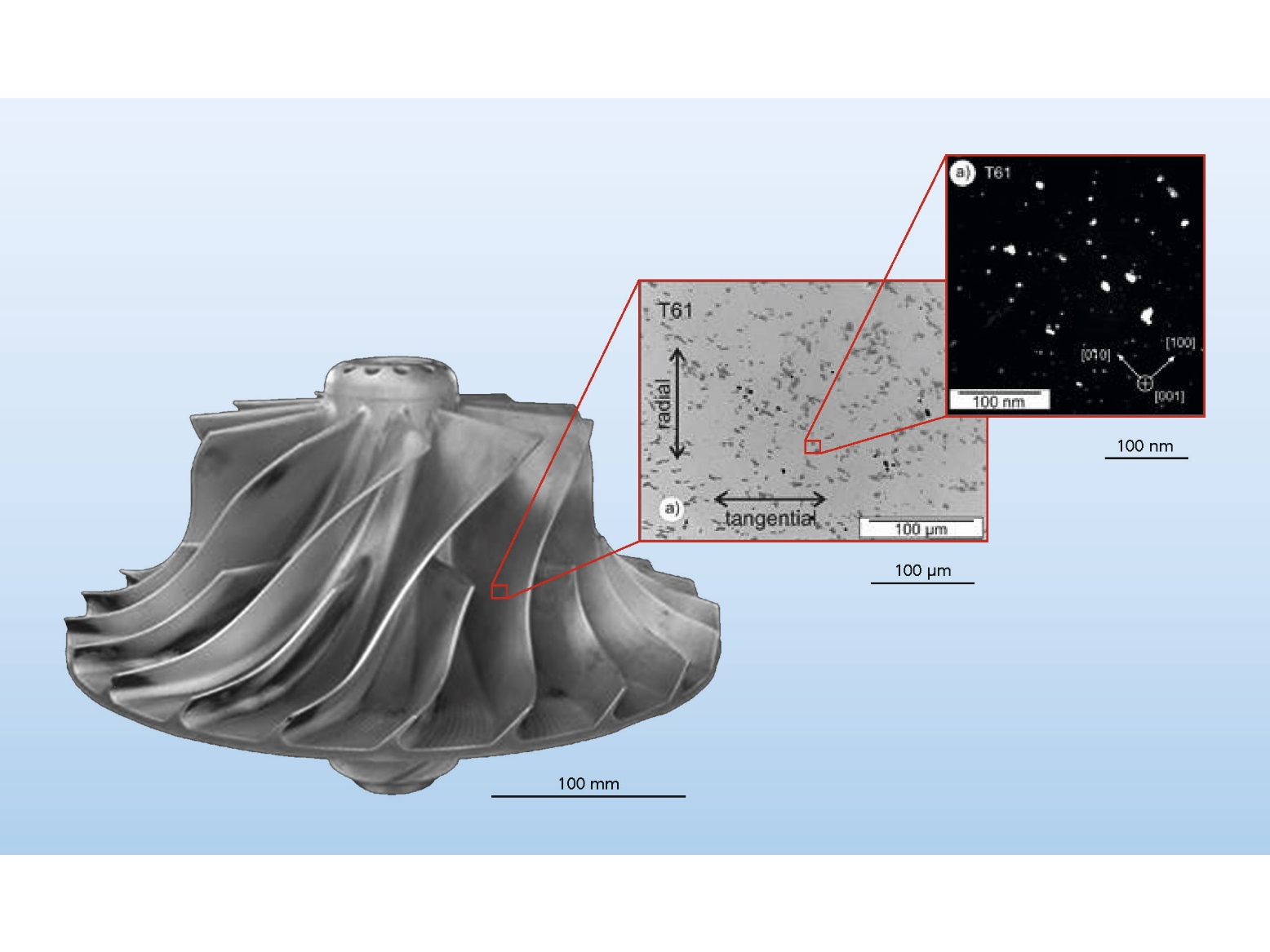Aging and lifetime of radial compressor wheels
Operation-related material aging in exhaust gas turbochargers
Turbochargers are continuing to grow in importance in the overall system of the piston engine, as they increase efficiency, convenience and cost-effectiveness. As a result, ever-increasing requirements are placed on the exhaust gas turbocharger module in terms of its operating stability. Nowadays the aluminum alloy EN AW-2618A, which can be aged artificially, is virtually the only material used for the compressor wheels in the turbocharger. With a microstructure that is adjusted specifically (metastable, rod-shaped phases of type Al2CuMg), the alloy achieves the creep and fatigue resistance properties required. However, the growth of larger rods at the expense of smaller ones continues after the heat treatment during operation (material aging), provided that the temperature is high enough, and consequently leads to a loss of strength.
Aging-related material characterization and model development
In order to exploit the potential of the material in operation to the fullest and avoid having to find a substitute because of potential uncertainties resulting from material aging, the Fraunhofer IWM in Freiburg and the BAM in Berlin have characterized the alloy in various states of aging in experiment in terms of its fatigue and creep properties. Building on this, models for lifetime assessment have been developed and implemented using the finite elements method. An existing Chaboche model was extended for deformation modeling to include so-called »inner variables« for the rod radius and cumulative viscoplastic strain. The parameters for the stress-strain behavior dependent on aging and softening are interpolated in the model in accordance with these inner variables. A cycle jump approach allows extrapolation of the inner variables for aging (rod radius) and cyclical softening (cumulative viscoplastic strain), which change over the lifetime, at a selected point in that lifetime. More complex load cycles can be dissected using rainflow counting before the finite element simulation and are included in the lifetime prediction related to age in a post-processing stage.
Back to Assessment of Materials and Lifetime Concepts Highlights
 Fraunhofer Institute for Mechanics of Materials IWM
Fraunhofer Institute for Mechanics of Materials IWM